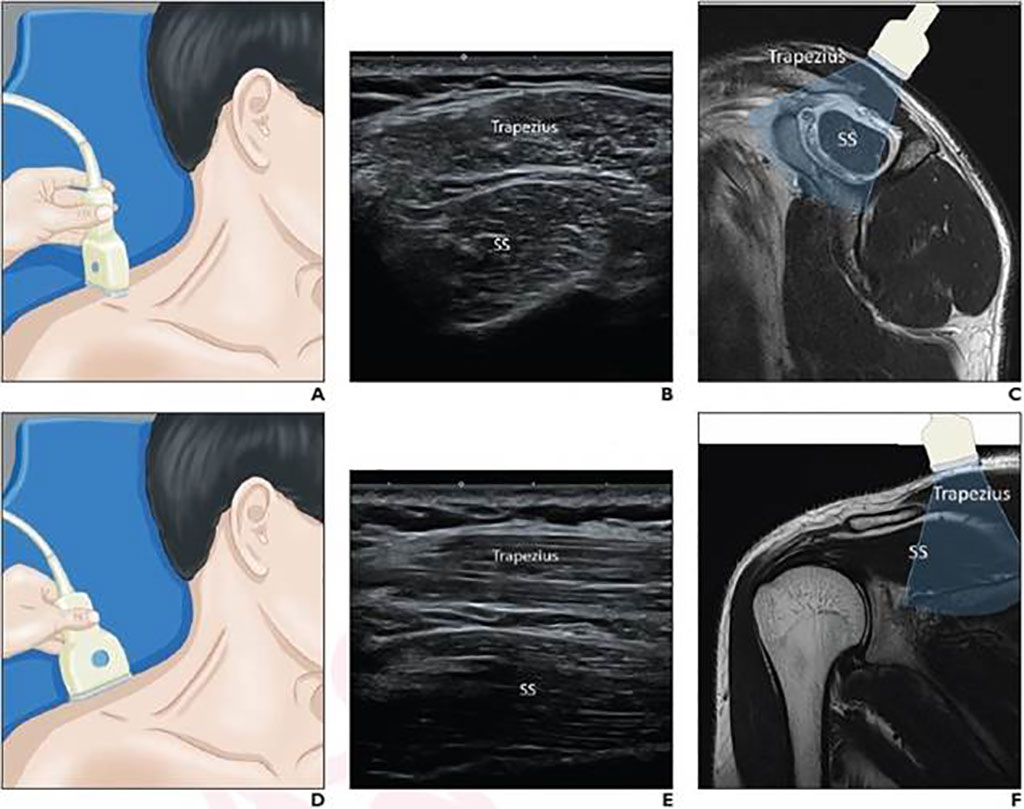Preoperative Ultrasound Helps Predict Rotator Cuff Repair
By MedImaging International staff writers
Posted on 02 Feb 2022
A new study suggests that shear wave elastography (SWE) of the shoulder prior to rotator cuff surgery can serve as a prognostic marker for success. Posted on 02 Feb 2022
Researchers at Hallym University Dongtan Sacred Heart Hospital (Hwaseong, Republic of Korea) conducted a prospective study of 74 patients (37 men, mean age 64 year) who underwent rotator cuff repair from May 2019 to January 2021, in order to explore the effectiveness of preoperative SWE measurements of the supraspinatus muscle to predict successful rotator cuff repair. All patients underwent preoperative shoulder magnetic resonance imaging (MRI) and investigational shoulder ultrasound, including SWE using shear modulus.

Image: SWE in 37-Year-Old Man together with coronal T2-weighted MR image (Photo courtesy of AJR)
Mean elasticity was measured of the supraspinatus and trapezius muscles, and mean elasticity ratio between them was calculated. On SWE, muscular fatty infiltration score was recorded on grayscale ultrasound; on MRI, muscular fatty infiltration was assessed by Goutallier's grade, and muscular atrophy was assessed by the occupation ratio between cross-sectional areas of supraspinatus muscle and supraspinatus fossa, and by muscle atrophy grade. After repair, the procedures were classified as achieving sufficient (60 patients) or insufficient (14 patients) repair.
The results showed that patients with insufficient repair more commonly exhibited a large (3-5 cm) tear, higher mean Goutallier's score, mean muscle atrophy score, mean supraspinatus elasticity and elasticity ratios, higher grayscale fatty infiltration grade, and lower occupation ratio. The elasticity ratio derived from the SWE measurements achieved a sensitivity of 100% and a specificity of 90% for predicting insufficient repair. The study was published on January 19, 2022, in American Journal of Roentgenology (AJR).
“SWE-derived elasticity is higher in patients with insufficient rotator cuff repair; elasticity ratio independently predicts insufficient repair,” concluded corresponding author Eun Kyung Khil, MD, of the department of radiology, and colleagues. “At multivariable analysis, including tear size, the three MRI measures, elasticity ratio, and grayscale fatty infiltration grade, the only independent predictors of insufficient repair were muscle atrophy grade of 2-3 and elasticity ratio.”
SWE relies on the generation of shear waves determined by the displacement of tissues induced by the force of a focused ultrasound beam or by external pressure. The shear waves are lateral waves, with a motion perpendicular to the direction of the generating force, travel slowly, and are rapidly attenuated by tissue. The propagation velocity of the shear waves correlates with the elasticity of tissue.
Related Links:
Hallym University Dongtan Sacred Heart Hospital














